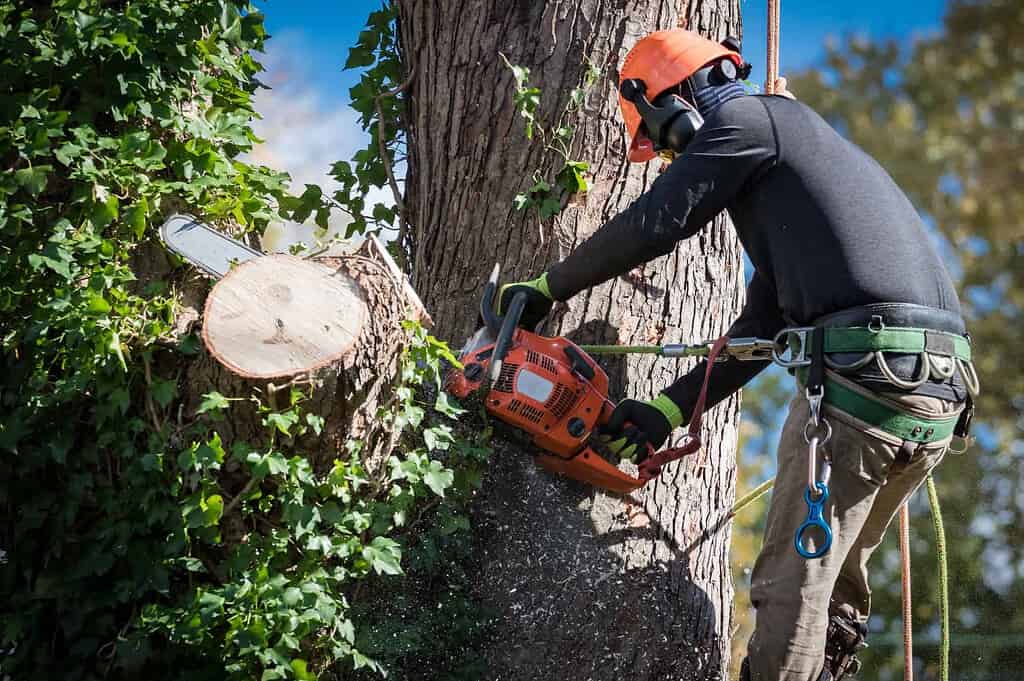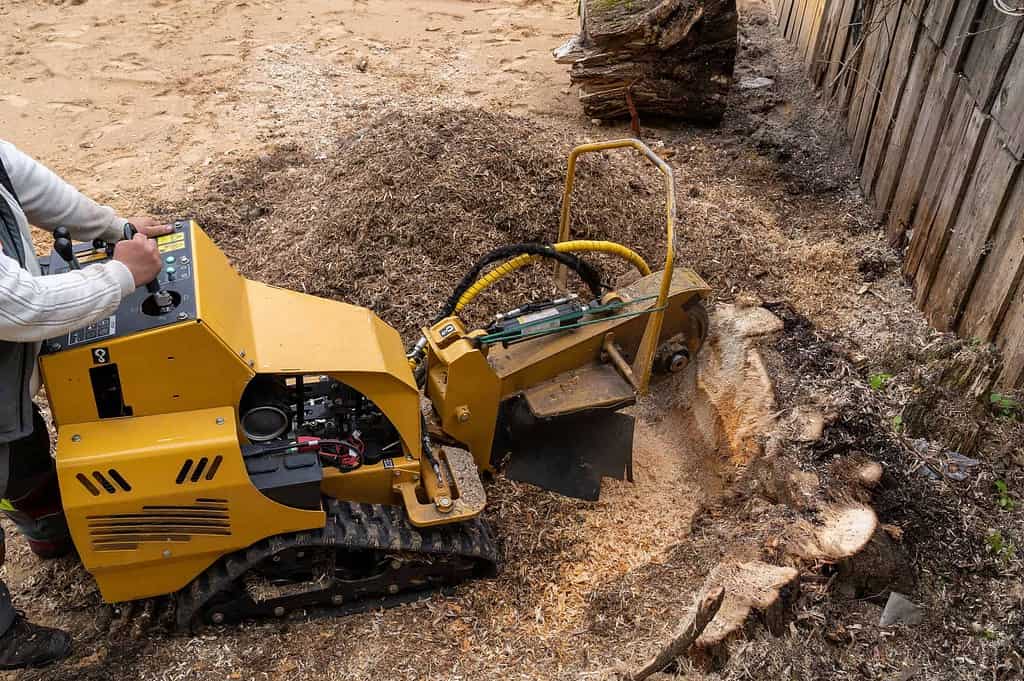Trees are a wonderful addition to any landscape, providing shade, beauty, and environmental benefits. They enhance property values and offer a sense of connection to nature.
However, there are times when tree removal becomes the best course of action, though unfortunate. Here are seven situations where removing a tree from your property may be necessary.

1. The Tree is Dead
When a tree dies, it’s not just an aesthetic problem. Safety becomes a significant concern. A dead tree’s weakened structure makes it highly likely to drop branches or collapse completely, posing a risk to property and people.
Furthermore, a dead tree can attract pests and diseases that threaten other healthy trees. Removing the dead tree eliminates the hazard and protects the rest of your landscape. If you’re unsure about a tree’s condition, there are signs to look for. Lack of leaves during the growing season, brittle branches that snap easily, and the presence of fungi.
However, extra care should be taken when removing dead trees to prevent injuries. That way, working with tree removal services that specialize in local and national safety standards is advisable. They will remove the tree professionally without endangering anyone or destroying the landscape.
2. Severe Disease or Infestation
Trees can suffer from various diseases and become targets for insect infestations. Statistics show that over 80% of tree species are affected by at least one disease and 75% by insects. While some of these issues are treatable, others are too aggressive to combat.
When the tree’s health is failing and beyond saving, removal is often the only way to protect the other trees in the area. Removing it stops the disease or infestation from spreading, safeguarding the health of your whole landscape.
Consulting an arborist is crucial in such situations. A professional can accurately diagnose the problem and advise on whether the tree can recover or the risk to other trees is too great. They can also recommend preventative measures for your remaining trees.
3. Significant Structural Damage
Storms often cause severe damage to trees, snapping branches, or even splitting trunks. Sometimes, the damage is too extensive for the tree to recover. Internal decay, unseen from the outside, can also critically weaken a tree’s integrity. When the structural stability of a tree is compromised, it becomes increasingly likely to fall or drop large limbs – especially during inclement weather.
Prioritize safety in these situations. A structurally compromised tree near a house, power lines, paths, or play areas poses can be very dangerous. Professional tree service is the safest way to manage a tree that can cause harm if it falls.
4. Root System Issues
While a tree’s roots are essential for its health, they can sometimes become problematic. Studies show that the root systems contain over 65% of a tree’s biomass, meaning they can grow extensively and penetrate walls and foundations. Aggressive root systems can invade and damage underground utilities like water or sewer lines. Roots can also force their way under sidewalks, driveways, or house foundations, causing uneven surfaces, tripping hazards, and costly structural problems.
When tree roots threaten your property’s infrastructure, you may have no choice but to consider removal. While some root issues can be mitigated with pruning or barriers, in extreme cases, the safest solution is removing the tree entirely.

A large wooden stump is milled with a yellow stump cutter against the background of a plank wall.
View from above on a yellow stump cutter equipped with tracks. In milling machines, the head grinds a large strain of chips. Next to the milling cutter, a large pile of weeds from the freshly chopped stump.
5. Overcrowding
Trees need space to reach their full potential. When planted too close together, trees compete fiercely for resources like sunlight, water, and nutrients. This can stunt their growth and lead to a decline in health for some or all of the trees involved. Removing selected trees allows the remaining ones to flourish and adds value to your property by showcasing healthier, more attractive specimens.
Thinning out overcrowded trees creates a healthier environment by improving light penetration and airflow. It can also contribute to a more balanced and aesthetically pleasing landscape. You can add landscaping designs when removing excess trees by felling them in a particular pattern using a chainsaw. This way, you’re removing trees and elevating your landscape.
6. Obstruction or Poor Placement
Sometimes, a tree, though healthy, is simply in the wrong place. Over the years, it might outgrow its space, block important views, or become a hazard to power lines. Branches might also interfere with solar panels, negatively impacting efficiency.
Careful planning before planting is always ideal, but removal may be the most practical solution when dealing with an existing tree in a problematic location. This ensures safety, preserves scenery, and maximizes your use of solar energy.
7. The Wrong Tree for the Space
Not all trees are created equal, and planting the wrong type of tree in a particular spot can lead to problems. A tree that grows too big for its allotted area creates overcrowding and root system issues. Additionally, some tree species are considered invasive because they spread quickly and outcompete native plants.
Removing an unsuitable tree clears the way for planting a more appropriate choice. You can select a species that fits the space, provides benefits in line with your goals (shade, privacy, fruit, etc.), and won’t disrupt the ecological balance.
Conclusion
Deciding to remove a tree should always be taken with seriousness. Trees offer numerous benefits, and options for preservation or treatment should be explored whenever possible. Consulting a qualified arborist is always a wise step, as they can provide expert advice on a tree’s health, potential risks, and whether removal is truly the best option.














